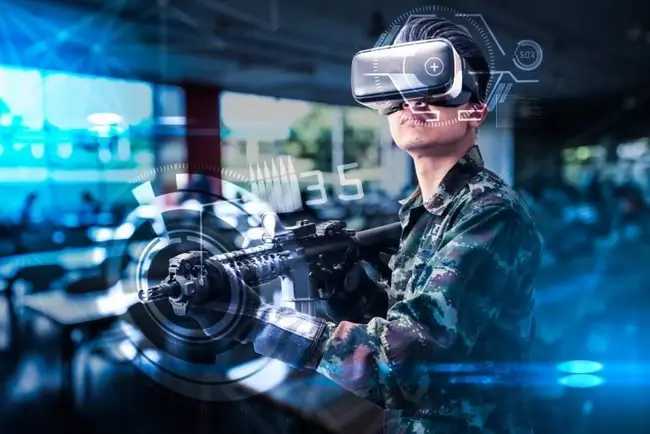Kinesthetic learning has long been hailed as a means to improve employee performance. On-the-job experience, or 'being thrown in at the deep end', are effective ways to discover your own 'what went wells' and 'even better ifs'. However, in some industries, getting immersive experience is easier said than done. For example, let's look at aviation. Of course, it's important for pilots to know exactly what to do if something goes wrong with – I don't know – the left phalange. However, getting pilots real-life practice in a safe way is difficult. It's not as though you can simply ask the ground crew to snip a couple of cables and see if the pilot can work out why the plane is plummeting to the ground. Likewise, in plastic surgery, you would expect your surgeon to have immersive experience, rather than just theory and textbook knowledge, before they take a scalpel to your skin. However, surgeons cannot simply rely on willing test subjects to build their experience portfolio. It wouldn't be safe and it wouldn't be ethical either. Thus, there is a clear need among high consequence industries for safe yet immersive training alternatives. Fortunately, virtual reality can deliver such industries – whether it be nuclear power, trucking, the military and so on – exactly that.

Virtual training for physical results
As a quick recap, virtual reality provides simulated experiences to users, virtually transporting them to different locations and environments. In particular, virtual reality often comes in the form of special electronic equipment, such as headsets, that generate a three-dimensional scenario that the wearer or user can interact with. For high consequence industries, virtual reality enables users to actually operate equipment and get a real 'feel' of real-life tasks. Organisations can engineer dangerous scenarios (such as the aforementioned plummeting plane) to help trainees learn what to do in these situations. In turn, virtual reality provides a safe alternative to allow new recruits to learn on the job. However, it's not just about the dangerous or extraordinary situations. It's also about giving trainees a safe environment to learn and make mistakes in. Through experiential learning, trainees can not only improve their skill set, but gain a better understanding of how they react in a stressful situation. Clearly, virtual reality offers numerous advantages in terms of safe, intensive training. However, the benefits don't stop there. Virtual reality is also a cheaper alternative to reenacting real-life scenarios. Not only that, but the time savings alone can help keep costs down in a 'time is money' era. Of course, virtual reality has historically been more on the expensive side. However, as more organisations jump on the virtual reality bandwagon, costs of virtual reality are quickly plateauing. Thus, virtual reality provides a clear, obvious solution to age-old problems. High consequence industries finally have a viable way to throw employees in the deep end, without using any water.







Comments ( 0 )